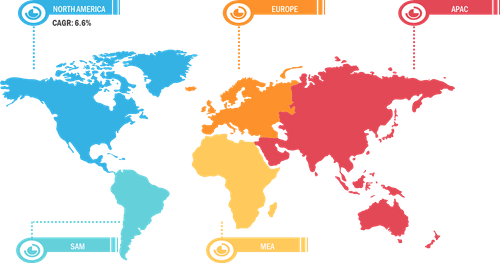Shift towards Sustainability along with Eco-friendly Initiatives by Manufacturers to Escalate Recycled Textile Market Growth at 6.2% CAGR During 2020–2027
According to our latest market study on “Recycled Textile Market Forecast to 2027 – COVID-19 Impact and Global Analysis – Type (Recycled Cotton, Recycled Wool, Recycled Polyester, Recycled Nylon, and Others),End-user Industry (Automotive, Retail, Mining, and Others),” the market was valued at US$ 5,855.39million in 2019 and is projected to reach US$ 9,365.04millionby 2027; it is expected to grow at a CAGR of 6.2% from 2020to 2027.The report highlights key factors driving the market growth and prominent players along with their developmentsin the market.
Recycled textileare old clothing or other unused textile that can be recovered for reuse with the help of various recycling techniques. Recycling of textile is done to treat textile waste and reuse the reclaimed fibre across diversified industrial base, which helps to save natural resources and contribute to environment sustainability. In current era, they have significantly contributed to the growth of the textile recycling industry. Recycling of textile is taken to be an environmentally friendly practice. The recycled textile are available at lower costs to the customers as they require comparatively less raw materials for their conversion into significant fibres.
Now-a-days, sustainability is considered to be at the forefront of major strategies, initiatives, and planning in the textile industry. The importance of sustainability is not just understood from ecological point of view, but also from economical aspect. In the current era, every stage in textile industry starting from fiber production to shipping is suitably aligned keeping sustainability as focal point. The increased focus over ecological balance has driven the concept of the sustainable development. The future of sustainable textile is based upon its ability to minimize the use of natural resources and mobilizing the concept of reusing and recycling of products to minimize overall waste. The companies in textile industry are adopting an eco-friendly and sustainable production approach by investing in better R&D activities so as to optimize resource consumption and promote environmental benefits.
Several manufacturers are producing textile fibres by recycling used textile. For instance, Eco-fi is involved in manufacturing textile from 100% recycled PET fibers, which finds its use in various application bases such as furnishings, home textile, and car interiors. Companies such as K-sorb (Eco-sorb international) produces regenerated form of textile widely used in industries such as sludge stabilization and various environmental remediation programme. Further, companies such as Barnhardt, which is considered to be very old recycling company, is involved in supplying regenerated, reclaimed, and recycled cotton as homogenous blends with virgin cotton. Further, the recycled form of fibers is extensively used in production of clothing lines of Marks & Spencer, Armani Jeans, and Eco-simple, among others. There are a few more companies that are launching their labels using PET bottle recycling. Levi Strauss uses eight plastic bottles to make one air of Denim pant. Also, following the trend, Nike has undertaken initiatives to collect the extra clothing from public in order to recycling itto make new apparels and footwear. Therefore, the shift toward sustainable future coupled with eco-friendly taken by initiatives by manufacturers is altogether expected to provide opportunity for the market growth.
Chindi, Khaloom Textile India Pvt. Ltd., Kishco Group, Usha Yarns Limited, Anandi Enterprises, Hyosung Corporation, Leign Fibers Inc., Martex Fiber Southern Corporation, Renewcell AB, and Boer Group are among the well-established players in the global recycled textile market.
Impact of COVID-19 Pandemic on Recycled Textile Market
The COVID-19 pandemic first began in Wuhan (China) during December 2019, and since then, it has spread around the globe at a fast pace. The COVID-19 pandemic has affected economies and industries due to imposed lockdowns, travel bans, and business shutdowns. Chemicals and materials is one of the world’s major industries suffering serious disruptions such as supply chain breaks, technology events cancellations, and office shutdowns as a result of this outbreak. This is further projected to impact the demand for recycled textile products globally.
GlobalRecycled Textile Market Breakdown – by Region, 2019

Recycled Textile Market Growth Report | Size, Share Insights 2027
Download Free Sample
Recycled Textile Market Forecast to 2027 - COVID-19 Impact and Global Analysis by Type (Recycled Cotton, Recycled Wool, Recycled Polyester, Recycled Nylon, and Others), End-user Industry (Automotive, Retail, Mining, and Others) and Geography
Recycled Textile Market Growth Report | Size, Share Insights 2027
Download Free SampleRecycled Textile Market Forecast to 2027 - COVID-19 Impact and Global Analysis by Type (Recycled Cotton, Recycled Wool, Recycled Polyester, Recycled Nylon, and Others), End-user Industry (Automotive, Retail, Mining, and Others) and Geography
The report includes the segmentation of the global recycled textile market as follows:
Global Recycled Textile Market,By Type
- Recycled Cotton
- Recycled Wool
- Recycled Polyester
- Recycled Nylon
- Others
Global Recycled Textile Market,By End-User Industry
- Automotive
- Retail
- Mining
- Others
Global Recycled Textile Market, By Geography
- North America
- US
- Canada
- Mexico
- Europe
- Germany
- France
- UK
- Italy
- Rest of Europe
- Asia Pacific (APAC)
- Australia
- China
- India
- Japan
- South Korea
- Australia
- Rest of Asia Pacific
- Middle East and Africa (MEA)
- South Africa
- Saudi Arabia
- UAE
- Rest of Middle East and Africa
- South America
- Brazil
- Argentina
- Rest of South America